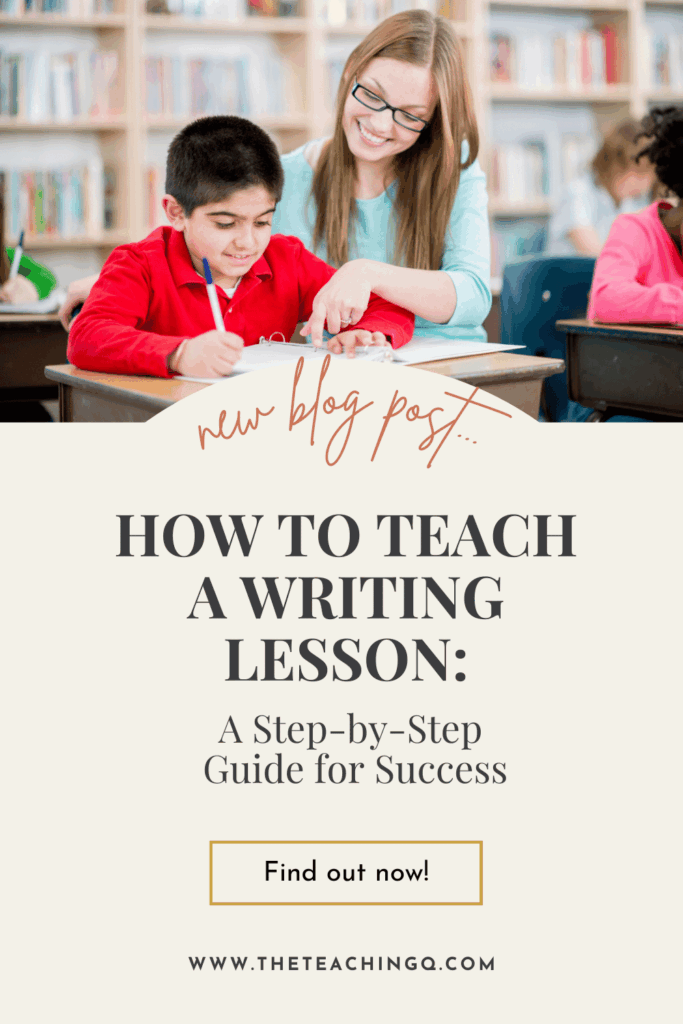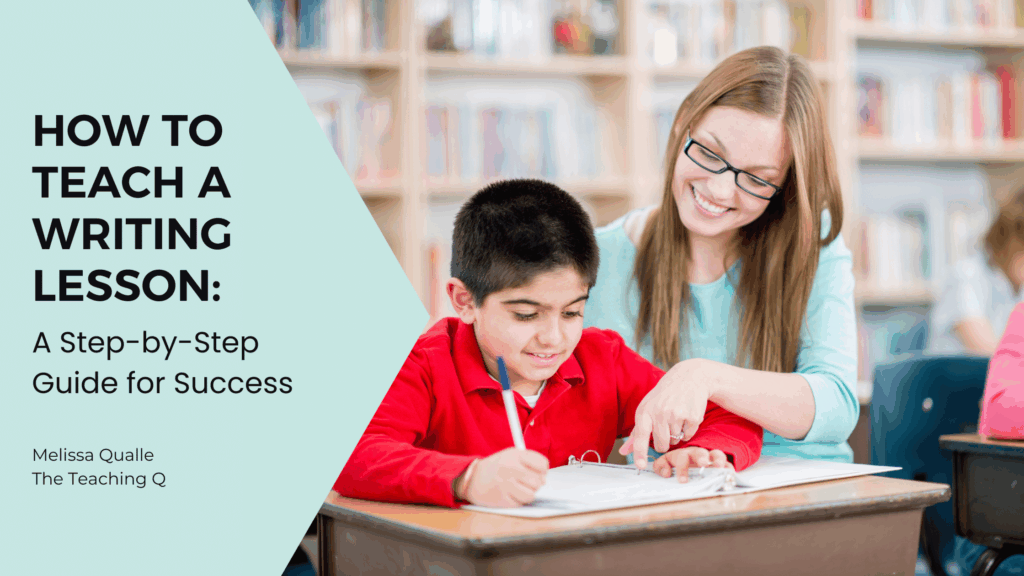Teaching writing can sometimes feel like an overwhelming task. Between lesson planning, keeping students engaged, and helping each child grow, it’s a lot! But when you have a clear framework to follow, everything changes.
In this post, I’ll walk you through how to teach a writing lesson with confidence, using a simple and effective routine: I Do, We Do, You Do.
This method, combined with specific supports like graphic organizers, sentence stems, and on-the-spot feedback, can transform your writing block into the most meaningful part of your day.
Let’s break it down step-by-step so you can start using this method right away!
Why Use a Consistent Writing Framework?
Before we dive into the “how,” let’s talk about why structure matters.
Young writers thrive when they know what to expect. A consistent writing routine:
- Builds student confidence
- Reduces anxiety around writing
- Supports independence over time
- Helps you, the teacher, manage lessons efficiently
By using the I Do, We Do, You Do approach, you provide just the right balance of modeling, guidance, and independence — setting students up for real growth.
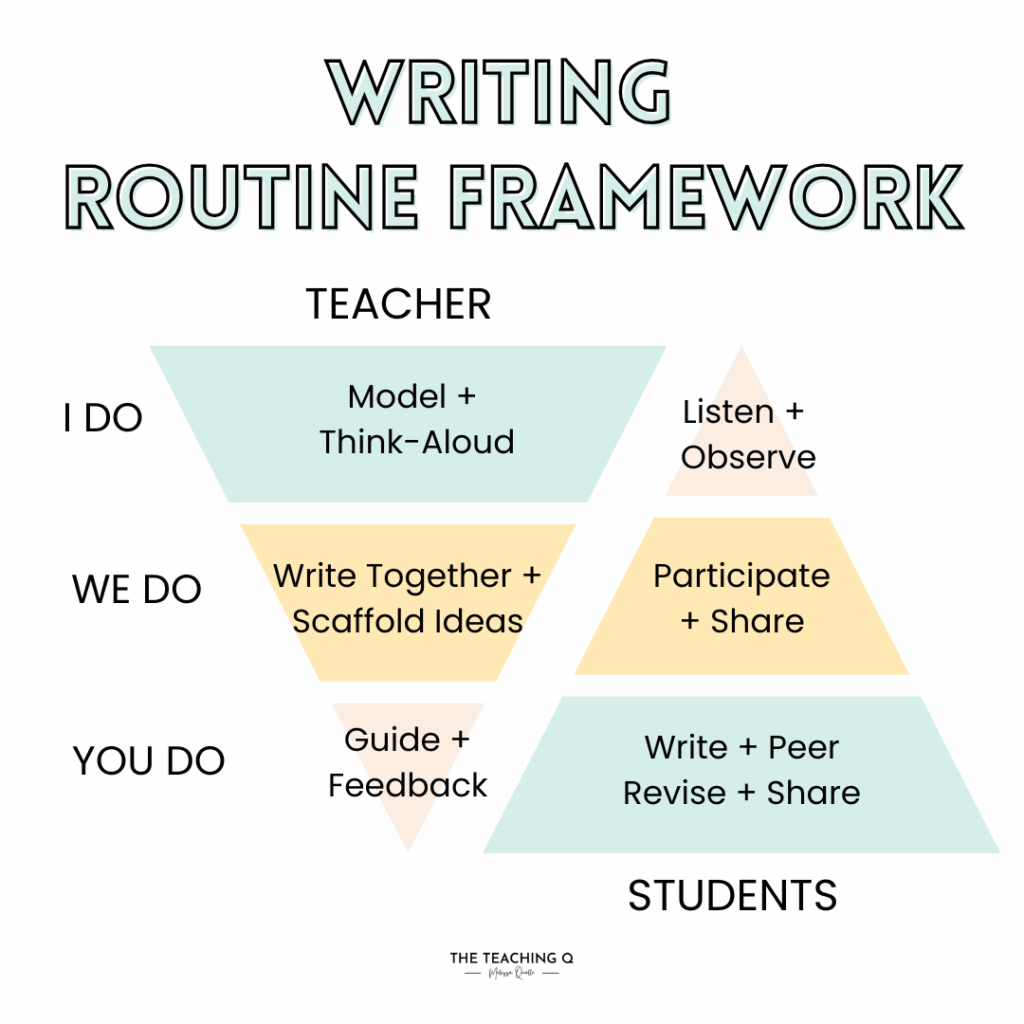
How to Teach a Writing Lesson: The 3 Key Stages
1. I Do: Teacher Modeling
Goal: Show students exactly how to think and write.
The “I Do” phase is the heart of the lesson. This is where you explicitly teach the writing skill or strategy you want students to learn. And the most important tool you have here? Teacher Think-Alouds.
👉 What the Teacher Does:
- Introduce the specific writing skill in kid-friendly language.
- Use graphic organizers to visually show the steps.
- Model writing a sample paragraph or essay out loud, explaining each decision as you go.
- Use sentence stems to demonstrate how to start sentences or connect ideas.
Example:
If you are teaching how to write a topic sentence, you might say:
“First, I’m thinking about what my paragraph will be about. I want my reader to know right away that I’m writing about why dogs are great pets. So I’ll start with: ‘Dogs make the best pets because they are loyal, fun, and easy to care for.’”
Notice that you narrate your thinking clearly and slowly. This is critical! Students need to hear and see the writing process happening in real time.
Teacher Tip: Use a projector or chart paper so students can follow along visually.
2. We Do: Guided Practice Together
Goal: Practice the skill collaboratively with lots of support.
After modeling, it’s time for guided practice. Think of this as “training wheels” for writing. Students help you write another example, with you prompting, guiding, and supporting every step of the way.
👉 What the Teacher Does:
- Revisit the graphic organizer or visual reference.
- Prompt students with questions:
(“What’s another good reason dogs are great pets?” “How could we start our next sentence?”) - Scribe student ideas as you talk through the writing together.
- Continue using sentence stems when needed to support student thinking.
- Model revising parts as a group if needed (“Hmm, let’s make this sentence even stronger!”).
Why This Matters:
Guided practice is where students start taking ownership but still have the safety net of your guidance. It builds confidence and reinforces the steps they just observed during modeling.
Teacher Tip: Celebrate student ideas during this phase! It keeps energy high and encourages participation.
3. You Do: Independent Practice
Goal: Students apply the skill with independence (but still with lots of support nearby).
Now it’s time for students to try the skill independently. However, before they pick up a pencil, it’s important to build in student “talk time.”
Talk Before Writing Matters!
Allowing students to discuss their ideas with a partner or small group helps them organize their thoughts, build confidence, and refine their ideas before committing them to paper. Talking clarifies thinking — and better thinking leads to better writing.
👉 What the Teacher Does:
- Facilitate a class or partner discussion about the writing topic.
- Encourage students to share their ideas out loud.
- Provide a sentence stem or starter for those who need it.
(Example: “One reason ____ is important is because ____.”) - Circulate the room while students write, providing instant, on-the-spot feedback.
- Support students with quick mini-conferences or a sticky note suggestion as needed.
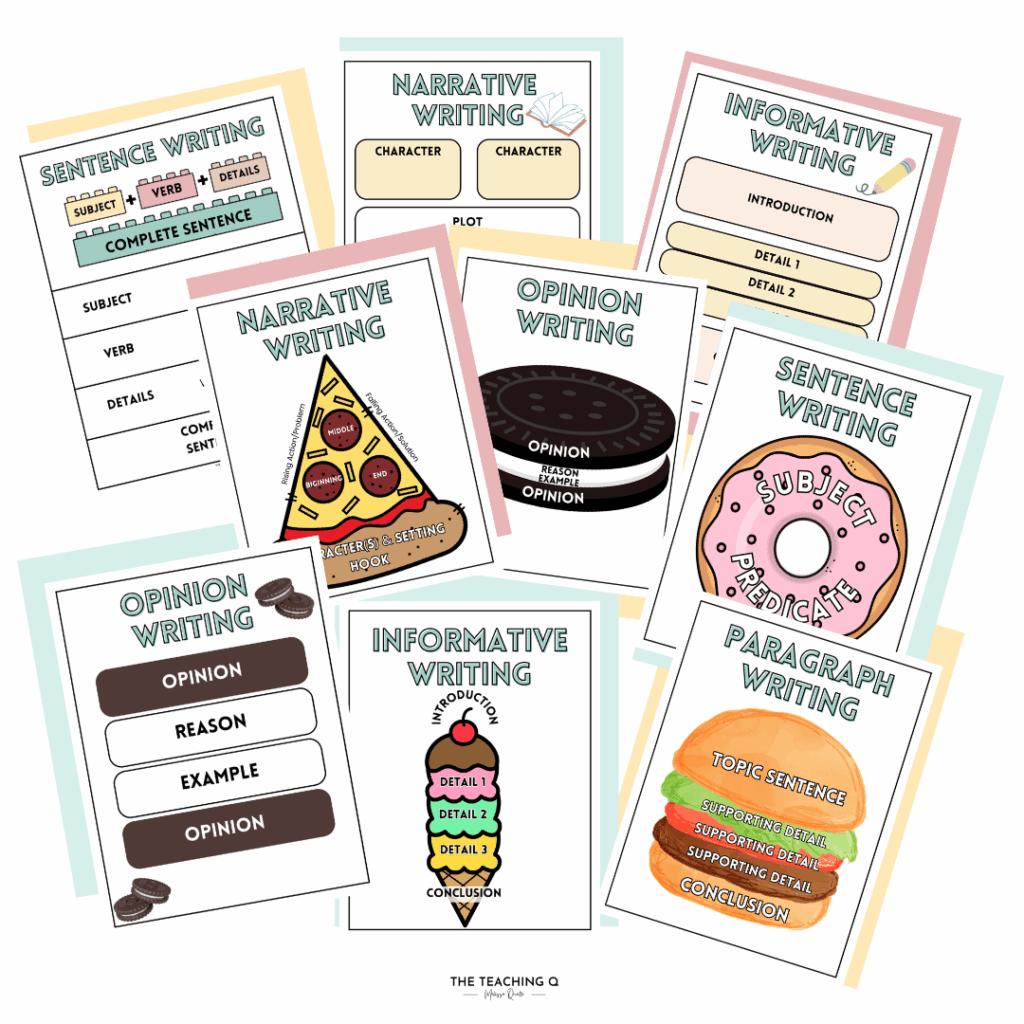
Essential Tools to Include in Every Writing Lesson
✅ Graphic Organizers:
Give students a roadmap to organize their ideas. Examples include story maps for narratives or hamburger models for paragraphs.
✅ Sentence Stems:
Provide students with starter phrases to help them form complete, strong sentences. This removes the fear of “not knowing what to say” and boosts their confidence instantly.
✅ Teacher Think-Alouds:
Model your thinking clearly and often. This demystifies writing and shows students that mistakes, changes, and new ideas are part of the process!
✅ Student Talk Time:
Plan for partner or small group discussions before writing. Talking helps students plan their ideas and gives them language tools they can use when writing.
✅ On-the-Spot Feedback:
Don’t wait until the end! Giving immediate feedback as students write prevents small mistakes from growing and provides students with encouragement right when they need it.
✅ Celebration Opportunities:
Allow students to share their writing with the class, small groups, or partners. Sharing builds pride, motivation, and writing community.
Final Encouragement
Teaching writing doesn’t have to be complicated. When you use the I Do, We Do, You Do structure and embed modeling, talking, graphic organizers, and real-time feedback into each lesson, you create a classroom where writing becomes joyful, purposeful, and achievable for every student.
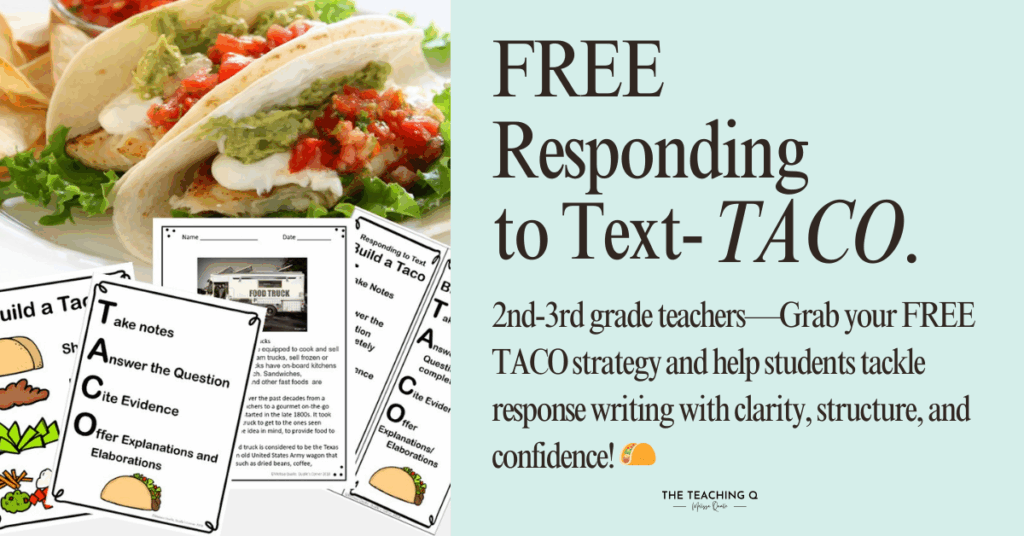
Every writing lesson is a chance to unlock creativity, build skills, and grow confident young authors.
You’ve got this — and your students will be better writers because of the thoughtful structure and love you bring to every lesson!
